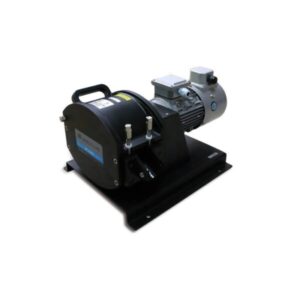Fluid transfer peristaltic pumps are widely used in a range of industries and scientific applications for their ability to handle delicate fluids while maintaining precise flow control. These pumps operate on the principle of peristalsis, mimicking the natural squeezing and relaxing action of muscles. In this article, we will delve into the inner workings of a fluid transfer peristaltic pump, exploring its components, operating principles, and advantages in various fields.
Understanding Fluid Transfer Peristaltic Pumps
- Components:A fluid transfer peristaltic pump consists of a pump head, tubing, drive mechanism, control interface, and power source. The pump head houses the tubing and rollers or shoes, which exert pressure on the tubing to create the peristaltic action. The tubing serves as the conduit for fluid transfer, while the drive mechanism, controlled by the interface, imparts the necessary motion to generate the peristaltic flow.
- Operating Principles:Fluid transfer peristaltic pumps operate by cyclically compressing and relaxing a flexible tube to propel fluids. The pump head contains a set of rollers or shoes that rotate against the tubing, progressively compressing it along its length. This compression creates a series of isolated pockets that move the fluid forward without any direct contact with the pump mechanism, ensuring gentle handling and preventing contamination.
Pump Mechanism and Operation
- Tube Loading:The fluid transfer peristaltic pump tubing is loaded into the pump head, forming a loop or a continuous path. The tubing is typically made of a flexible and resilient material, such as silicone or thermoplastic elastomer (TPE), to facilitate the peristaltic action.
- Peristaltic Action:As the pump is activated, the drive mechanism rotates the rollers or shoes against the tubing. The rotating motion causes the rollers or shoes to compress the tubing against a rigid surface, occluding the fluid flow. As the rollers or shoes continue to rotate, the compressed section moves along the tubing, displacing the fluid and creating a forward flow.
- Flow Control:The flow rate of the fluid transfer peristaltic pump is controlled by adjusting the speed of the drive mechanism. By varying the rotational speed, users can achieve precise control over the flow rate, allowing for accurate dispensing or transferring of fluids.
- Reversibility and Bidirectional Flow:One of the advantages of fluid transfer peristaltic pumps is their ability to operate in reverse. By reversing the direction of the drive mechanism, the peristaltic action can be reversed, enabling bidirectional fluid flow. This feature is particularly useful in applications that require fluid recirculation or backflushing.
Advantages and Applications of Fluid Transfer Peristaltic Pumps
- Gentle Fluid Handling:Fluid transfer peristaltic pumps offer gentle and non-contact fluid transfer, making them suitable for delicate or shear-sensitive fluids. By avoiding direct contact with the fluid, these pumps minimize the risk of contamination, degradation, or alteration of the fluid properties.
- Precise Flow Control:Fluid transfer peristaltic pumps provide precise flow control, allowing users to accurately dispense or transfer fluids in a wide range of volumes. The ability to adjust the rotational speed of the pump enables fine-tuning of flow rates, making these pumps valuable in applications that require precise dosing or sampling.
- Versatility:Fluid transfer peristaltic pumps are compatible with various tubing materials, sizes, and configurations, allowing them to handle a wide range of fluids, including corrosive chemicals, viscous substances, and sensitive biological samples. This versatility makes them valuable tools in industries such as pharmaceuticals, biotechnology, food and beverage, and environmental monitoring.
- Low Maintenance and Easy Tube Replacement:The tubing in fluid transfer peristaltic pumps is a replaceable component, simplifying maintenance and reducing downtime. When the tubing becomes worn, contaminated, or needs to be changed for different applications, it can be easily replaced without the need for complex disassembly or recalibration.
Fluid transfer peristaltic pumps provide a reliable and precise method of fluid handling, offering gentle and controlled flow in various industries and scientific fields. By leveraging the peristaltic action, these pumps ensure minimal contact with the fluid while maintaining accurate flow rates. With their versatility, precise flow control, and ease of maintenance, fluid transfer peristaltic pumps have become indispensable tools for fluid transfer, dosing, and sampling applications in research, manufacturing, and laboratory settings.
